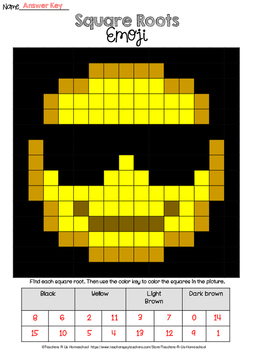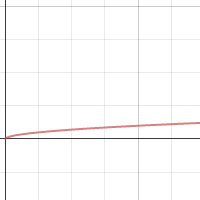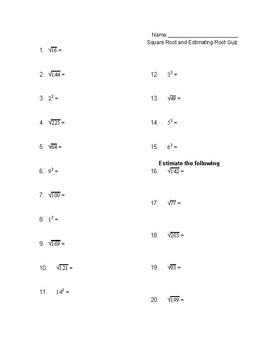Topic square root spiral: Discover the intriguing world of the square root spiral, also known as the Spiral of Theodorus. This geometric construct, formed by adjoining right triangles, reveals the beauty of mathematics through its unique pattern and properties. Learn how each segment of the spiral relates to the square roots of natural numbers and explore its applications in illustrating irrational numbers.
Table of Content
- The Square Root Spiral (Spiral of Theodorus)
- Introduction to the Square Root Spiral
- Historical Background
- Mathematical Definition
- Construction of the Spiral
- Geometric Properties
- Analytical Properties
- Applications and Implications
- Comparisons with Other Spirals
- Visualizations and Demonstrations
- References and Further Reading
- YOUTUBE:
The Square Root Spiral (Spiral of Theodorus)
The square root spiral, also known as the Spiral of Theodorus or the Pythagorean spiral, is a fascinating geometric construction that links algebraic concepts with geometric visualization. Below is a detailed exploration of its construction, properties, and significance in mathematics.
Construction
The Spiral of Theodorus is formed by sequentially constructing right triangles. The first triangle is an isosceles right triangle with each leg of length 1. The hypotenuse of this triangle is √2. The next triangle is formed with one leg equal to the hypotenuse of the previous triangle (√2) and the other leg equal to 1, producing a hypotenuse of √3. This process is repeated, with each new triangle's hypotenuse becoming one leg of the next triangle. The ith triangle in the sequence has sides of lengths √i and 1, with a hypotenuse of √(i+1).
Mathematical Properties
- The angle between the legs of each triangle (from the origin) decreases as more triangles are added.
- The growth of the spiral can be approximated by considering the angles and lengths of the triangles involved.
- The vertices of the spiral lie on a continuous curve that resembles an Archimedean spiral.
Analytical Description
In the complex plane, the vertices of the spiral can be described using complex numbers. If zn represents the vertex of the nth triangle, then:
\[
z_{n+1} = \left(1 + \frac{i}{\sqrt{n+1}}\right) z_n
\]
Starting with \(z_0 = 1\), the vertices of the spiral can be found recursively.
Comparison with the Archimedean Spiral
While the Spiral of Theodorus approximates the form of an Archimedean spiral, there are differences due to the discrete nature of its construction. The Archimedean spiral has the form \(r = \theta\), where the distance between successive turns is constant. The Square Root Spiral approximates this behavior for large n.
Applications and Further Reading
The Spiral of Theodorus has implications in various fields such as number theory and complex analysis. It provides a visual and intuitive understanding of square roots and irrational numbers.
- For a detailed mathematical treatment, see the .
- Explore the interactive construction of the spiral on .
- For historical context and additional properties, visit the .
| Initial Length | 1 |
| Hypotenuse of 1st triangle | \(\sqrt{2}\) |
| Hypotenuse of 2nd triangle | \(\sqrt{3}\) |
| Hypotenuse of 3rd triangle | \(\sqrt{4} = 2\) |
The Spiral of Theodorus offers a unique blend of geometry and algebra, making it a valuable tool for teaching and understanding mathematical concepts.

READ MORE:
Introduction to the Square Root Spiral
The square root spiral, also known as the Theodorus spiral or Pythagorean spiral, is a geometric figure that begins with a right triangle whose hypotenuse is the square root of 2. Each subsequent triangle shares one side with the previous triangle, forming a continuous spiral. This fascinating mathematical construct has applications in various fields such as number theory and geometry.
- The square root spiral is constructed by forming right triangles where each hypotenuse is the square root of an integer.
- The angle between each segment of the spiral decreases as the spiral grows.
- Mathematically, the vertices of the spiral can be described using complex numbers and trigonometric functions.
- The spiral approximates an Archimedean spiral as it grows, where the distance between the turns remains constant.
To understand the construction step by step:
- Start with a right triangle with legs of length 1, forming a hypotenuse of √2.
- Construct the next triangle with one leg along the hypotenuse of the previous triangle and a new leg of length 1, forming a new hypotenuse of √3.
- Repeat the process, each time forming a new triangle with one leg of length 1 and the hypotenuse of the previous triangle, forming subsequent hypotenuses of √4, √5, and so on.
The growth of the spiral can be described by the following mathematical properties:
- The length of each hypotenuse increases by the square root of the next integer.
- The angle between each segment can be calculated using arctan functions, showing a decreasing pattern.
- For large numbers, the total angle grows approximately like 2√N, where N is the number of triangles.
This unique formation demonstrates both the beauty and complexity of mathematical structures and has been studied for its intriguing properties and visual appeal.
Historical Background
The Square Root Spiral, also known as the Spiral of Theodorus, is a geometric figure first studied by the ancient Greek mathematician Theodorus of Cyrene, who lived during the 5th century BCE. Theodorus's work is primarily known through references in Plato's dialogues, especially the Theaetetus, where he explores the concept of irrational numbers.
The construction of the Spiral of Theodorus involves creating a sequence of contiguous right triangles, each with one leg as the hypotenuse of the previous triangle. This method visually demonstrates the irrationality of the square roots of non-square integers. Starting with a unit length for the first triangle, the process continues by adding triangles such that each new hypotenuse represents the square root of the next natural number.
The historical significance of this spiral lies in its connection to early Greek mathematics and the study of irrational numbers. The discovery and proof of irrational numbers, such as √2, were groundbreaking at the time and challenged the Pythagorean belief that all numbers could be expressed as the ratio of integers.
Theodorus's method of constructing the spiral using geometric means provided a concrete visualization of abstract mathematical concepts. This approach not only reinforced the validity of the Pythagorean theorem but also illustrated the increasing complexity of numbers as one moves along the spiral.
Throughout history, the Square Root Spiral has been appreciated not only for its mathematical properties but also for its aesthetic appeal. It represents a bridge between mathematics and art, demonstrating how numerical relationships can be expressed through geometric forms. Theodorus's work laid the groundwork for future mathematical explorations and remains a subject of interest for mathematicians and enthusiasts alike.
Mathematical Definition
The Square Root Spiral, also known as the Spiral of Theodorus, is a geometric construction formed by a sequence of contiguous right-angled triangles. Each triangle in the sequence has a height of 1, and the hypotenuse of each triangle becomes the base of the next triangle. The construction begins with an isosceles right triangle whose hypotenuse has a length of \(\sqrt{2}\). The process continues, with each subsequent triangle's hypotenuse representing the square root of the next integer.
The coordinates of the vertices of the spiral in the complex plane can be represented using polar coordinates. The radius \(r_n\) at the \(n\)-th step is given by \(\sqrt{n}\), and the angle \(\varphi_n\) is calculated as:
\[
\varphi_n = \sum_{k=1}^{n} \arctan\left(\frac{1}{\sqrt{k}}\right)
\]
For large \(n\), the total angle \(\varphi_n\) approaches:
\[
\varphi_n \approx 2\sqrt{n} + C
\]
where \(C\) is a constant approximately equal to -2.15778.
The vertices of the spiral can also be expressed as complex numbers. If we denote the vertices by \(z_n\), starting with \(z_0 = 1\), each subsequent vertex can be found using the relation:
\[
z_{n+1} = \left(1 + \frac{i}{\sqrt{n+1}}\right) z_n
\]
In this construction, each segment of the spiral (corresponding to the hypotenuse of each triangle) has lengths \(\sqrt{n+1}\) starting from the first triangle with length \(\sqrt{2}\).
For example, the first few triangles have the following properties:
- First triangle: Sides = 1, 1, \(\sqrt{2}\)
- Second triangle: Sides = \(\sqrt{2}\), 1, \(\sqrt{3}\)
- Third triangle: Sides = \(\sqrt{3}\), 1, \(\sqrt{4} = 2\)
This sequence continues indefinitely, and the spiral gradually spreads outward as each new triangle is added. The angles between each new triangle's hypotenuse and the previous hypotenuse become smaller as the number of triangles increases.
Construction of the Spiral
The square root spiral, also known as the Spiral of Theodorus, can be constructed using a sequence of right triangles. Each triangle shares a common side with the previous triangle and has one leg of length 1 unit. Here is a step-by-step guide to constructing this spiral:
- Draw a line segment AB of length 1 unit.
- Construct a line BX perpendicular to AB at point B.
- From point B, draw an arc with a radius of 1 unit that intersects BX at point C.
- Join points A and C to form the hypotenuse AC of the right triangle ABC. The length of AC will be √2 units.
- Using AC as the base, construct a line CY perpendicular to AC at point C.
- From point C, draw an arc with a radius of 1 unit that intersects CY at point D.
- Join points A and D to form the hypotenuse AD of the right triangle ACD. The length of AD will be √3 units.
- Continue this process by constructing perpendicular lines and drawing arcs with a radius of 1 unit from each new intersection point.
- The resulting figure, with each new hypotenuse becoming the base for the next right triangle, will form a square root spiral.
The mathematical principles underlying this construction are based on the Pythagorean theorem. For each triangle, the hypotenuse is the square root of the sum of the squares of the other two sides:
\[
\begin{aligned}
&AC = \sqrt{AB^2 + BC^2} = \sqrt{1^2 + 1^2} = \sqrt{2}, \\
&AD = \sqrt{AC^2 + CD^2} = \sqrt{(\sqrt{2})^2 + 1^2} = \sqrt{3}, \\
&\text{and so on.}
\end{aligned}
\]
Each hypotenuse represents the square root of a successive integer, creating a spiral pattern as each new right triangle is added.
Geometric Properties
The square root spiral, also known as the Spiral of Theodorus, is constructed from a series of contiguous right triangles. Each triangle shares a side with the previous one, forming a spiral shape.
- Angles and Lengths:
- Each right triangle in the spiral has one leg of unit length. The hypotenuse of each triangle becomes one leg of the next triangle.
- The lengths of the hypotenuses increase sequentially as √2, √3, √4, and so on.
- The angle at each vertex,
\(\varphi_n\) , between the hypotenuse of the nth triangle and the x-axis is given by\(\varphi_n = \arctan\left(\frac{1}{\sqrt{n}}\right)\) . - Convergence and Divergence:
- The total angle of the first N triangles in the spiral grows as
\(2\sqrt{N} + c_2(N)\) , where\(c_2(N)\) is a corrective term that approaches a constant as\(N\) increases. - For large N, the spiral approximates a continuous growth in total angle proportional to
\(2\sqrt{N}\) . - The growth of the edge lengths is approximately
\(\frac{1}{2\sqrt{n}}\) , indicating that each successive triangle adds a smaller increment to the overall length of the spiral.
In summary, the square root spiral exhibits a unique geometric progression characterized by the increasing lengths of its hypotenuses and the proportional growth of the angles at each vertex.
Analytical Properties
The square root spiral, also known as the spiral of Theodorus, possesses fascinating analytical properties that can be described through various mathematical concepts and equations.
Formulas and Equations
The position of the \(n\)-th point on the spiral can be expressed in terms of Cartesian coordinates \((x_n, y_n)\) and polar coordinates \((r_n, \theta_n)\).
- Cartesian Coordinates:
- Polar Coordinates:
For the \(n\)-th point:
\(x_n = \sum_{k=1}^{n} \cos \left( \sum_{j=1}^{k-1} \theta_j \right) \sqrt{k}\)
\(y_n = \sum_{k=1}^{n} \sin \left( \sum_{j=1}^{k-1} \theta_j \right) \sqrt{k}\)
For the \(n\)-th segment:
\(r_n = \sqrt{n}\)
\(\theta_n = \sum_{k=1}^{n} \tan^{-1} \left(\frac{1}{\sqrt{k}}\right)\)
Continuous Analogues
In exploring the continuous nature of the square root spiral, we consider the transformation from discrete steps to a continuous function. This can be achieved by examining the behavior as \(n\) approaches infinity.
For a continuous parameter \(t\), the continuous version of the square root spiral can be described using integrals:
\(r(t) = \sqrt{t}\)
\(\theta(t) = \int_0^t \frac{1}{\sqrt{x}} \, dx = 2\sqrt{t}\)
Thus, the parametric equations in Cartesian coordinates are:
\(x(t) = \int_0^t \cos(2\sqrt{x}) \, dx\)
\(y(t) = \int_0^t \sin(2\sqrt{x}) \, dx\)
These integrals can be evaluated using numerical methods for specific values of \(t\).
Applications and Implications
The square root spiral, also known as the Pythagorean spiral or the spiral of Theodorus, has various applications and implications across different fields of mathematics and science. Below, we explore some of these in detail:
-
Number Theory
The square root spiral provides a geometric interpretation of the square roots of natural numbers. Each step in the spiral corresponds to the hypotenuse of a right-angled triangle with legs of consecutive natural numbers.
- Visualizing Square Roots: The spiral offers a unique way to visualize and understand the concept of square roots, as each point on the spiral represents the square root of an integer.
- Pythagorean Triples: The construction of the spiral is closely related to Pythagorean triples, offering insights into their properties and relationships.
-
Complex Analysis
In complex analysis, the square root spiral can be used to illustrate the behavior of complex square root functions. The spiral helps in understanding how these functions map complex numbers onto a plane.
- Riemann Surfaces: The square root function is multi-valued, and the spiral can help visualize the Riemann surface associated with it, showing how the function behaves over different branches.
- Conformal Mappings: The spiral can be used to demonstrate the principles of conformal mappings, which are essential in complex analysis and have applications in engineering and physics.
-
Physics and Engineering
The square root spiral finds applications in physics and engineering, particularly in wave mechanics and signal processing.
- Wave Propagation: The spiral can model certain types of wave propagation, helping to understand phenomena such as diffraction and interference.
- Antenna Design: In engineering, the geometry of the square root spiral is used in designing antennas that require specific directional properties.
These applications highlight the broad utility of the square root spiral in both theoretical and applied contexts, demonstrating its importance in various domains of science and mathematics.
Comparisons with Other Spirals
The square root spiral, also known as the Spiral of Theodorus, can be compared with several other well-known spirals in mathematics, each having unique properties and applications. Here, we explore comparisons with the Archimedean spiral and the logarithmic spiral.
Archimedean Spiral
The Archimedean spiral is defined by the equation \( r = a + b\theta \), where \( r \) is the radial distance, \( \theta \) is the angular coordinate, and \( a \) and \( b \) are constants. This spiral is characterized by its constant separation between consecutive turns.
- Construction: Unlike the square root spiral, which grows based on the hypotenuse of right triangles, the Archimedean spiral increases linearly with the angle \( \theta \).
- Distance Between Turns: The distance between consecutive turns in the Archimedean spiral is constant, which is not the case for the square root spiral. For large \( n \), the square root spiral approximates an Archimedean spiral as the distance between the turns becomes approximately constant.
- Equation Comparison: The Archimedean spiral is given by \( r = a + b\theta \), while the square root spiral can be approximated for large \( n \) by \( r = \sqrt{n} \).
Logarithmic Spiral
The logarithmic spiral is described by the equation \( r = ae^{b\theta} \), where \( e \) is the base of the natural logarithm, and \( a \) and \( b \) are constants. This spiral exhibits exponential growth and is self-similar.
- Growth Rate: The logarithmic spiral grows exponentially with \( \theta \), while the square root spiral grows as the square root of the natural numbers.
- Self-Similarity: The logarithmic spiral maintains its shape at any scale, a property not shared by the square root spiral, which changes in spacing as it grows.
- Natural Occurrences: The logarithmic spiral is often found in nature, such as in the shapes of galaxies and shells, due to its self-similarity and growth properties.
Visual Comparison
To better understand these differences, consider the following table:
| Property | Square Root Spiral | Archimedean Spiral | Logarithmic Spiral |
|---|---|---|---|
| Equation | \( r = \sqrt{n} \) | \( r = a + b\theta \) | \( r = ae^{b\theta} \) |
| Growth Rate | Square root | Linear | Exponential |
| Turn Spacing | Variable | Constant | Variable but proportional |
| Natural Occurrences | Mathematical constructs | Mechanics, engineering | Nature (e.g., shells, galaxies) |
In conclusion, while the square root spiral has unique mathematical properties, the Archimedean and logarithmic spirals offer different perspectives and applications, showcasing the diversity and beauty of spiral forms in mathematics.

Visualizations and Demonstrations
Understanding the square root spiral is greatly enhanced by visual representations and interactive demonstrations. These tools help to illustrate the construction, geometric properties, and mathematical significance of the spiral.
- Graphical Representations
Graphical representations of the square root spiral involve plotting points and connecting them to visualize the spiral structure. Below is a step-by-step guide to constructing a square root spiral on graph paper:
- Initial Setup: Start with an isosceles right triangle with each leg of unit length.
- Adding Triangles: Form a new right triangle where one leg is the hypotenuse of the previous triangle, and the other leg has unit length.
- Iterative Process: Continue this process, with each new triangle's hypotenuse forming one leg of the next triangle, creating a spiral pattern.
- Interactive Tools
Several interactive tools and software can be used to explore the square root spiral more dynamically. These tools allow users to manipulate and visualize the spiral's properties effectively:
- GeoGebra: An interactive applet on GeoGebra allows users to construct and explore the square root spiral. Users can adjust parameters and observe how the spiral evolves. .
- Graphing Software: Tools like Desmos and other graphing calculators can be used to plot the square root spiral and analyze its properties.
- Mathematical Insights
Visualizing the square root spiral provides insights into various mathematical concepts:
- Growth Rate: The spacing between consecutive points increases as the square root values grow, highlighting the non-linear growth.
- Curvature: The spiral’s curvature illustrates the rate of growth of square roots and their deviation from linearity.
- Symmetry: The spiral exhibits symmetrical patterns, reflecting the mathematical harmony of square roots.
These visualizations and interactive tools not only enhance understanding but also make learning about the square root spiral more engaging and accessible.
References and Further Reading
For those interested in exploring the square root spiral in greater depth, the following resources provide detailed explanations, mathematical analyses, and applications:
-
The ordered distribution of natural numbers on the square root spiral
This paper by Harry K. Hahn explores the distribution of natural numbers on the square root spiral, examining their arrangement based on prime factors and quadratic polynomials. It also discusses the role of Fibonacci sequences and the golden mean in the structure of the spiral.
-
The distribution of prime numbers on the square root spiral
Another insightful paper by Harry K. Hahn, which delves into how prime numbers accumulate on the square root spiral. The study includes a comparison with the Ulam spiral and provides detailed diagrams and tables.
-
Theodorus Spiral -- from Wolfram MathWorld
This resource from Wolfram MathWorld provides a comprehensive overview of the Theodorus spiral, also known as the square root spiral. It includes mathematical definitions, historical context, and various properties of the spiral.
-
Geometry: Pythagorean Spiral or Square Root Spiral
This page on GoGeometry offers an accessible introduction to the Pythagorean spiral, describing its construction from right triangles and highlighting its mathematical beauty. It also provides interactive visualizations to aid understanding.
These resources will provide a thorough grounding in both the theoretical and practical aspects of the square root spiral, enhancing your appreciation and understanding of this fascinating mathematical concept.
Cách Vẽ Đường Xoắn Căn Bậc Hai
READ MORE:
Cách Vẽ Đường Xoắn Căn Bậc Hai














